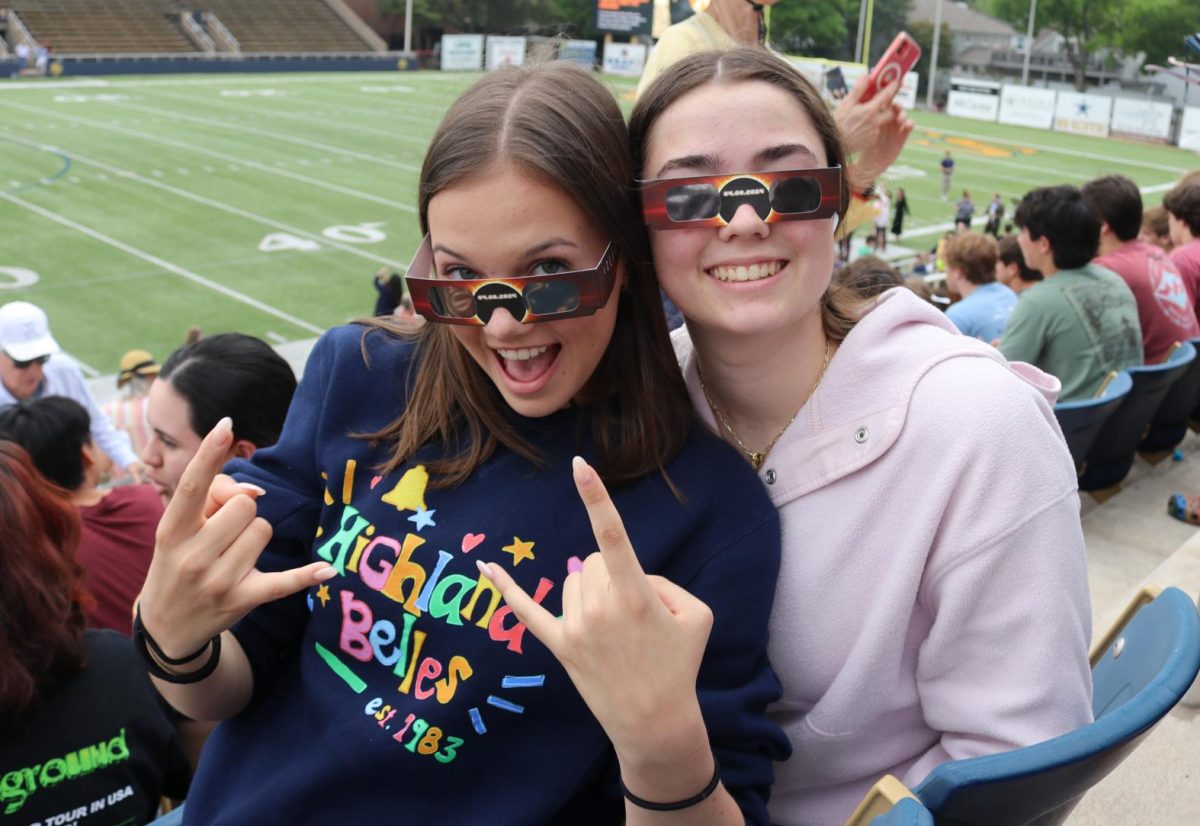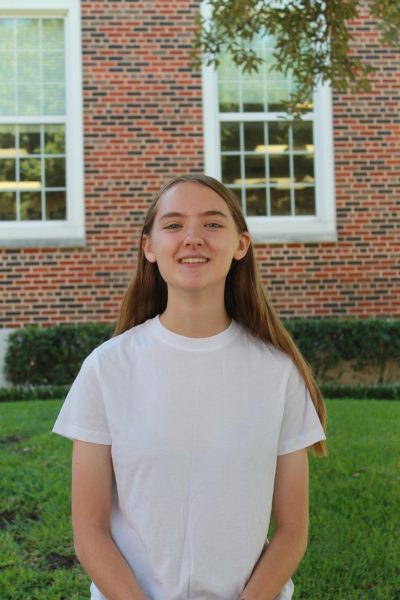On July 29, 1878, the city of Fort Worth was plunged into darkness in the midst of a total solar eclipse. Astronomers traveled from across the country to the S.W. Lomax Farm just outside the city and set up their telescopes to get a glimpse of this momentous celestial event.
Now, almost 146 years later, the state of Texas finally witnessed another solar eclipse. This eclipse, dubbed the “Great American Eclipse” due to its extensive path of totality, darkened Dallas’ skies for just under four minutes from 1:40pm to 1:44pm on April 12, 2024. In total, over 31 million people were able to witness this cosmic event, all over the country.
“Eclipses happen when the projected size of the moon and the projected size of the sun are the same,” McDonald Observatory Assistant Director Anita Cochran said. “When they line up, the moon blocks out all the light from the sun, causing us to have an eclipse.”
This is not the first eclipse to happen in the United States in recent years. The most recent one visible from the U.S. was in 2017. The path of totality was an estimated 62 to 71 miles wide, and stretched from Salem, Oregon to Columbia, South Carolina.
“So, I was living in Missouri at the time, which was in the path of totality for the 2017 eclipse. I was in middle school,” senior Lachlan Polefka said. “It was kind of cloudy, so I remember just taking off my glasses as soon as it got dark.”
During this year’s eclipse, however, the moon was almost 8,000 miles closer, creating a path of totality that ranged from 108 to 122 miles wide. To get the community excited about this once in a lifetime event, the school planetarium showed the film “Totality Over Texas,” an eclipse informational video made by the Houston Museum of Natural Science.
“We’re showing the film to TAG students from the elementary schools,” STEM lead Bridget Myers said. “We [also had] three community showings. It’s just meant to educate and excite people.”
As opposed to the eclipse that occurred in October of 2023, this year’s the moon fully covered the sun.
“The one in October is what’s called an annular eclipse,” Cochran said. “The sun was closer to the earth [compared to a total eclipse], leaving a ring of light around the moon.”
The closely related sibling of the solar eclipse is the lunar eclipse. Lunar eclipses occur when the Earth is positioned precisely between the moon and the sun, casting Earth’s shadow onto the surface of the moon. This causes the moon to turn a reddish color, which is where the name “blood moon” originates from.
“The difference is that solar eclipses can only happen during the new moon phase, and a lunar eclipse only can happen during a full moon phase,” Cochran said.
However, the exact alignment of the sun, Earth, and moon does not guarantee scientific spectacle. Weather conditions can affect eclipse visibility, and cloudy weather could prevent the more noticeable effects of a solar eclipse.
“Even if you can’t see the sun, you’ll be able to tell that it’s significantly darker,” Myers said. “It will be like nighttime in the middle of the day. It’ll still be cool. Personally, I’m just glad it’s not raining.”
Even if it’s cloudy, looking at a solar eclipse without ISO-certified glasses can still be dangerous. According to the Weinell Cornell School of Medicine, looking directly at the sun during an eclipse can cause retinal and ocular damage, leading to irreversible blindness or partial vision loss, even if it’s just for a few seconds.
“Solar eclipse glasses block much of the light being emitted from the sun,” Cochran said. “They block off the UV, optical and IR light enough so that you can safely look at the sun.”
Now that the four minutes of totality have passed, Dallasites will have to wait another 293 years to experience their next total solar eclipse in 2317.
“This is a unique experience, and the odds of experiencing it in your lifetime, in your hometown, are very, very slim,” Myers said. “We’re extremely lucky to be here for it.”




